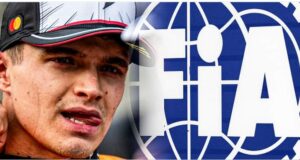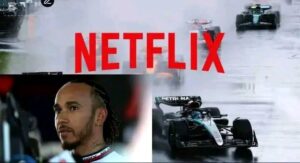F1 to introduce special Monaco GP rule forcing drivers to make more pit stops
The Formula 1 Commission has agreed to introduce special rules for the Monaco Grand Prix requiring drivers to make more pit stops.
Advert | Become a Supporter & go ad-free
The change is being introduced after most drivers were able to complete last year’s race without pitting. The race was red-flagged during the first lap, at which point most drivers completed their mandatory switch to a different tyre compound, removing the need to make a pit stop.
A statement issued by the FIA said the change is being made “with the aim of promoting better racing at the Monaco Grand Prix.”
“The commission agreed to increase the number of mandatory pit stops in the race,” it said. “These proposals will be further discussed by the Sporting Advisory Committee in the coming weeks.”
The Monaco Grand Prix is already subject to certain unique regulations within the FIA rule book. While every other race must run to a distance of at least 305 kilometres, the Monaco race is only 260km.
Other changes to the 2025 regulations were agreed by the F1 Commission, all of which are subject to the approval of the FIA’s World Motor Sport Council.
The sport’s governing body will introduce tougher deflection tests for wings to prevent teams devising constructions which flex at high speeds. The tests for rear wings will be imposed from the beginning of the season, while new front wing tests will arrive at the Spanish Grand Prix in June, the season’s ninth round.
Advert | Become a RaceFans supporter and go ad-free
The commission also agreed to remove the limitations on the number of gearboxes teams may use during a season. “The reliability of current designs renders this restriction obsolete,” the FIA noted.
Following the confusion at the beginning of last year’s Brazilian Grand Prix, the rules on starting procedures for races and grands prix have been revised and clarified. Further revisions were also agreed to the new rules requiring teams to use driver cooling systems in certain weather conditions.
More changes to F1’s extensive new regulations for the 2026 season were also discussed. “The commission highlighted the contribution of all teams and power unit manufacturers in refining aerodynamic performance and ensuring more efficient energy management for the next generation Formula 1 cars,” said the FIA.
I think a simple additional clause in the tyre change rule is all you need, something like the below
a) Drivers must complete a pitstop during green or yellow flag conditions whereupon they must fit a set of tyres that is of a different compound to the set fitted to the car at the start of the race.
@bascb Spot-on, not to mention precisely defining the safety issue aspect can be difficult & would therefore risk opening a can of worms.
F1 has the technology to reorder the cars in case of change of tires under red flag. Teams are free to change tires but the car is positioned with +20sec delta (adjusted per track) from the last ranking prior to the race being naturalised.
It would still be the safest and most fair option. And I’m surprised it doesn’t get named more often. Too simple and too fair for being F1?
@davethedrummer Also much more dangerous. The whole point of allowing tyre changes under red was because before that rule was introduced, cars were being sent on their way with damage, potentially including slow punctures, causing serious problems on restarts.
@oweng The rule used to be this, and was changed to the current variant after Canada 2011 (see Button’s 5 pit stops, being in last place with about 12 laps to go (IIRC), yet still winning).
Mandatory 2 stops should just be a thing for all races, I guess with George’s win (sort of) at Spa it showed the brilliance of both strategies, but 1 stop races can always be a bit dull
Agreed. When they did a mandatory 3 stops was it, due to excess tyre wear, everyone was at full chat for each stint. Its not a silver bullet but id just run it a few times to see if the software boys back at base could ruin that element of jeopardy or it was a longer term solve
@tonymansell They certainly can. Anything that is a set rule for a significant length of time can be coded into software and have the predictability built back in that way.
Yep. I’ve been saying this for years. More pit stops almost always results in better races which is helped further by having different strategies. My enthusiasm drops whenever they predict a one stop race.
How on earth can you still have different strategies when there’s multiple pitstops as mandatory?
The more pitstops required, the less space inbetween to actually still make a difference.
Sounds more like you want to punish drivers with the skill of taking care of their tyres.
We’ve already gotten rid of drivers with the skills of steering with no powersteering, the skill of manually shifting gears flawlessly and by ear, the skill of planning their own race with no other aids than pitwall boards, etc etc.
How dull can you go? Have an AI operated robot for a driver?
Then we go back to early 2000s, where with refueling we had 3 stops all the time, with races being drove flat out, but without meaningful overtaking for most of the race. It was better to undercut or overcut depending on the track. More pits tops normally detract from actual race, it becomes more of an exercise of hot lapping and less actual racing. With teams running all possible variables in the background to determine optimal strategy, I think this will detract more the meaning of a Grand Prix, where driver is also supposed to take care of the car, tires, and manage pace, whilst having to overtake for track position more often than in the early 2000s. Of course we have DRS…which detracts from racing. But more pit stops is not the solution in my opinion.
racing”.
It *could* result in better racing if and only if strategy around the pitstops combined with something you could do on track would actually make a difference. That is, if the strategy forces a driver to behave differently on track, that’d be great. But given Monaco’s biggest problem is that once you’re in a train there’s *nothing you can do differently*, forcing people to pit more might make for some interesting strategic decisions, but the actual *racing* will be just as mindbendingly dull as it’s been for the last decade.
Want a solution to actually make *racing* interesting?
No wings.
Just for Monaco. But no front or rear wing. Ruin the car’s downforce & aero grip, and now trying to make it to the finish is a challenge, and because it’s so much harder to drive, passing on track is easier, plus you can’t accidentally razor someone’s tires with protruding wings, so passing is less risky. And way more risky.
It’d
@helava I like your no wings suggestion & I’d also add Albon’s suggestion of only bringing the softest compound to Monaco.
Anyway, you & everyone pointing out the same thing are spot-on that the pit stop amount has zero impact on the racing quality or overtaking, so a totally useless extended requirement.
would require the chassis and suspension guys to rethink their cars.
The Monaco GP should be extended or they should fuel restrict it. I think. Like this GP you get this much fuel. Heck, bring back refueling if you need more stops.
But the odds of critical minds ‘fixing’ F1 these days is pretty darn close to nigh. The FIA will fine people who think critically or speak their minds.
I get that F1 wants to spice things up at Monaco, but forcing extra pit stops feels like a band-aid fix. The real issue is the track itself—overtaking is nearly impossible, and no amount of mandatory stops will change that. Instead of making strategy more interesting, this could just add unnecessary complications without actually improving the racing.
Mandatory pit stops have never worked to make the on track racing better.
I guess if you like watching cars passing in the pits it’s great but the focus should be on the track and encouraging drivers to have a go on the track.
Also it’s interesting that at Monaco the highest number of on track passes in a dry race always happend in the days where you never pitted unless you had a problem. And the cars of 1994-1997 were the same size with the cars of 1998-2016 been narrower yet as soon as pit stops became a thing at Monaco overtaking declined.
is a reference to the introduction of refueling in 1994 which is what introduced pit stops to Monaco.
Prior to 1994 outside of a car issue or changeable weather Monaco was always a no stop race and with overtaking having to happen on track we always saw drivers having a go and that no stop period was when we did see overtaking at Monaco because drivers couldn’t just hold back and wait for pit stops and over or undercuts.
4 mandatory pitstops at Monaco and you can only use softest tyre – see what happens with that.
Seriously, just because of one ‘isolated’ race with an opening lap suspension, which hadn’t happened even once before in Monaco, & one GP shouldn’t be treated differently from all the others in any case.
Yes, dry Monaco GPs tend to be very processional under normal circumstances, but nothing still justifies different strategy-related requirements.
FIA almost always makes knee-jerk reaction changes over any given isolated situation, which isn’t the same as a recurring occurrence by any means.
Considering how difficult overtaking is at monaco + that incident I don’t think it’s a bad idea to put some additional pit stop to try and make something happen, monaco has always been about strategy, and more pit stops allow for more strategic opportunitie
hardly ‘kneejerk’ , they are just saying you need to stop once. For such a dynamic sport some fans sure are conservative
Why
What if there are two red flags? They’ll all change their tyres again. Duh!
Pitstops aren’t racing. They’re the opposite of racing. An excuse not to race.
PeteB (@peteb)
18th February 2025, 18:52
If you’re starting at the back, surely you pit on the first lap and hope to get lucky with a SC? There wilp be some really weird strategy if they bring this rule in. Could be interesting but I don’t think it’s a good idea.
The biggest problem with the race at Monaco last year is that the driver with the best record of completing overtakes at Monaco of the last few years… didn’t get the chance to try any.
Monaco is not the only race at risk of a no-green-flag-stop race, but it is the easiest to make work. A better fix would have been to not limit it to Monaco, but simply say (as several people in this post already have) that pit stops under red flags don’t count as the mandatory stop. This has the additional bonus of encouraging the use of softer compounds in situations where the amount of race remaining suits such a plan. Drivers seem to have a better time racing each other when they’re all on similar-age softs than when they are on similar-age hards.












Post Comment